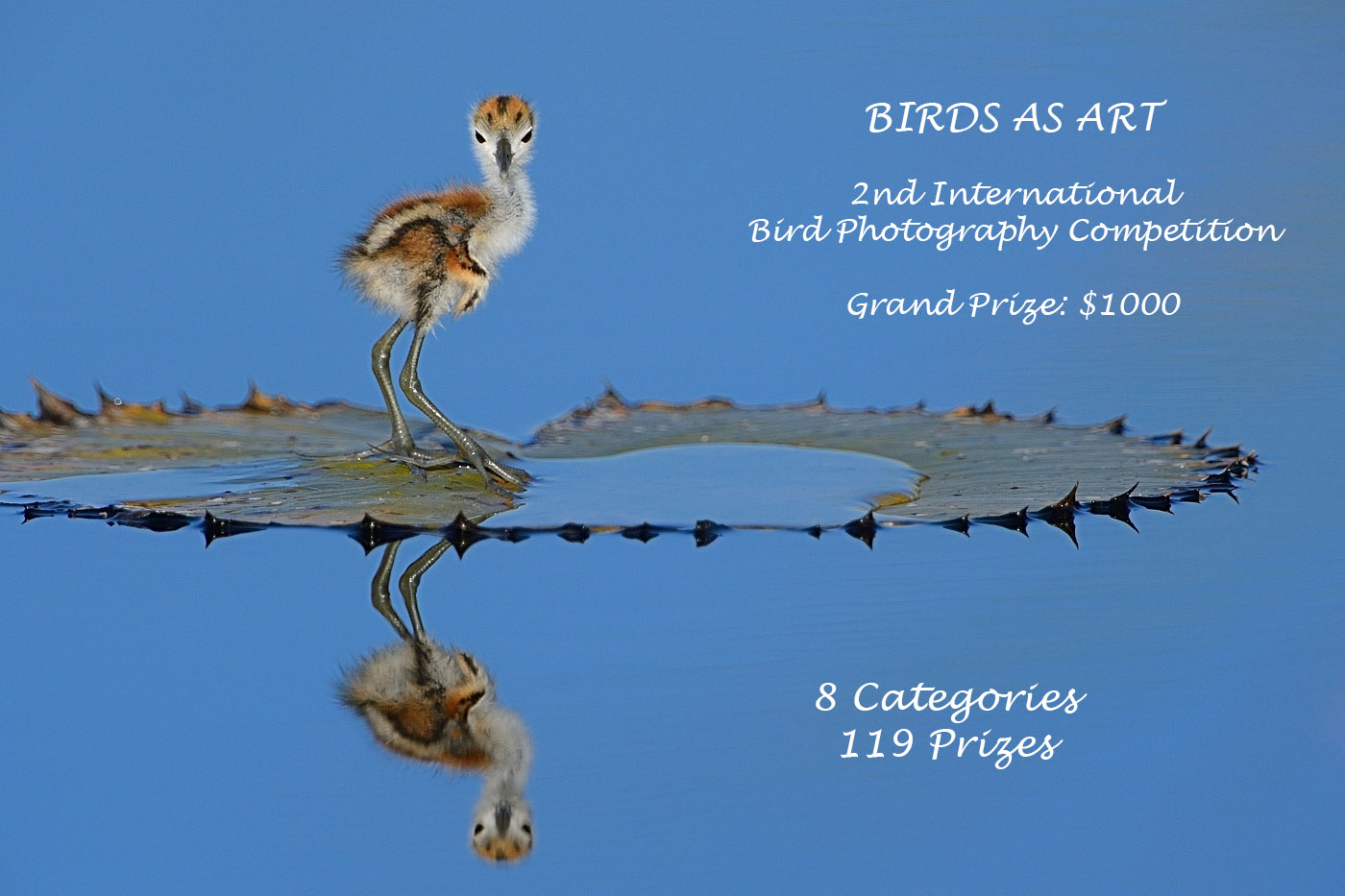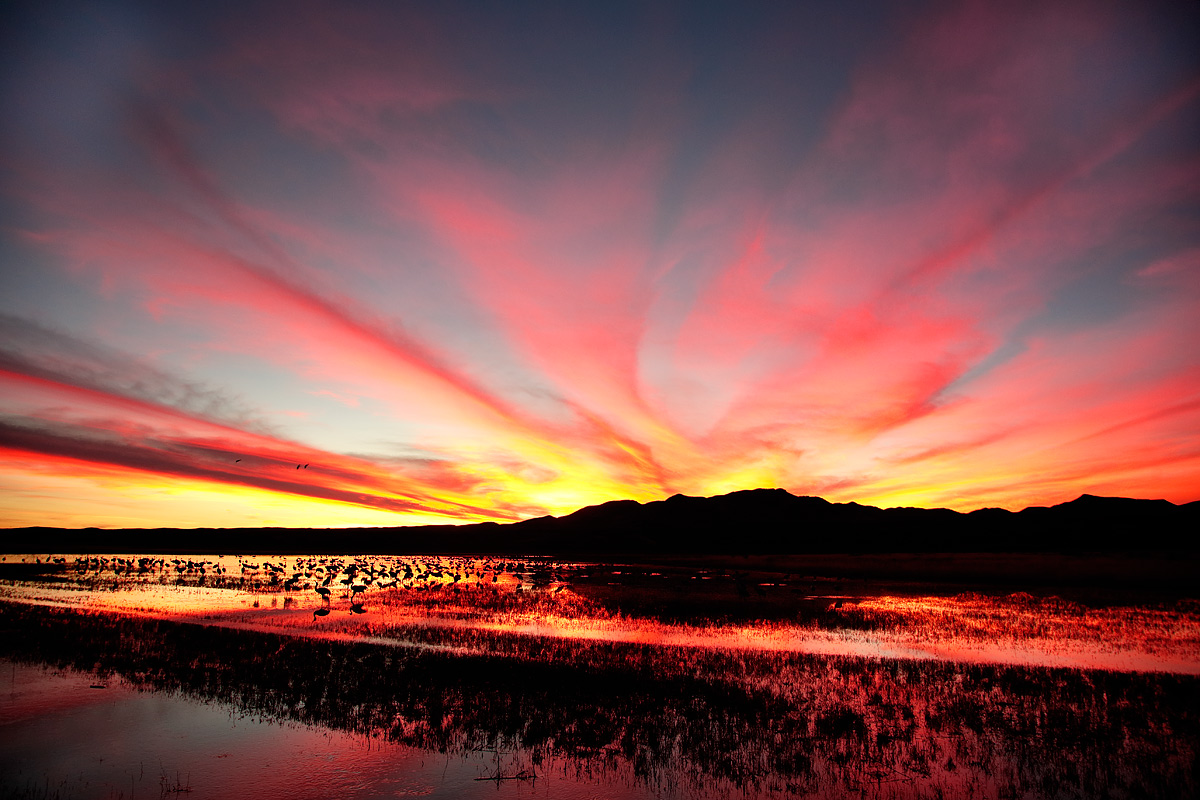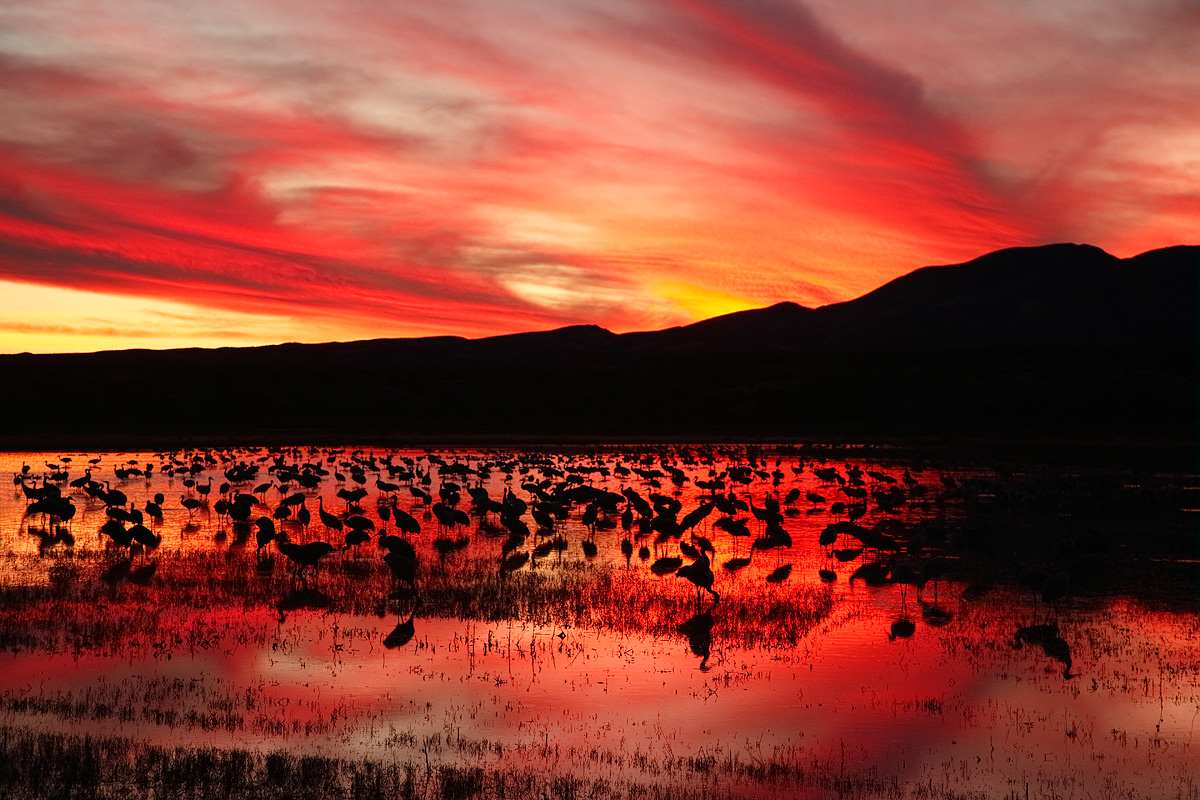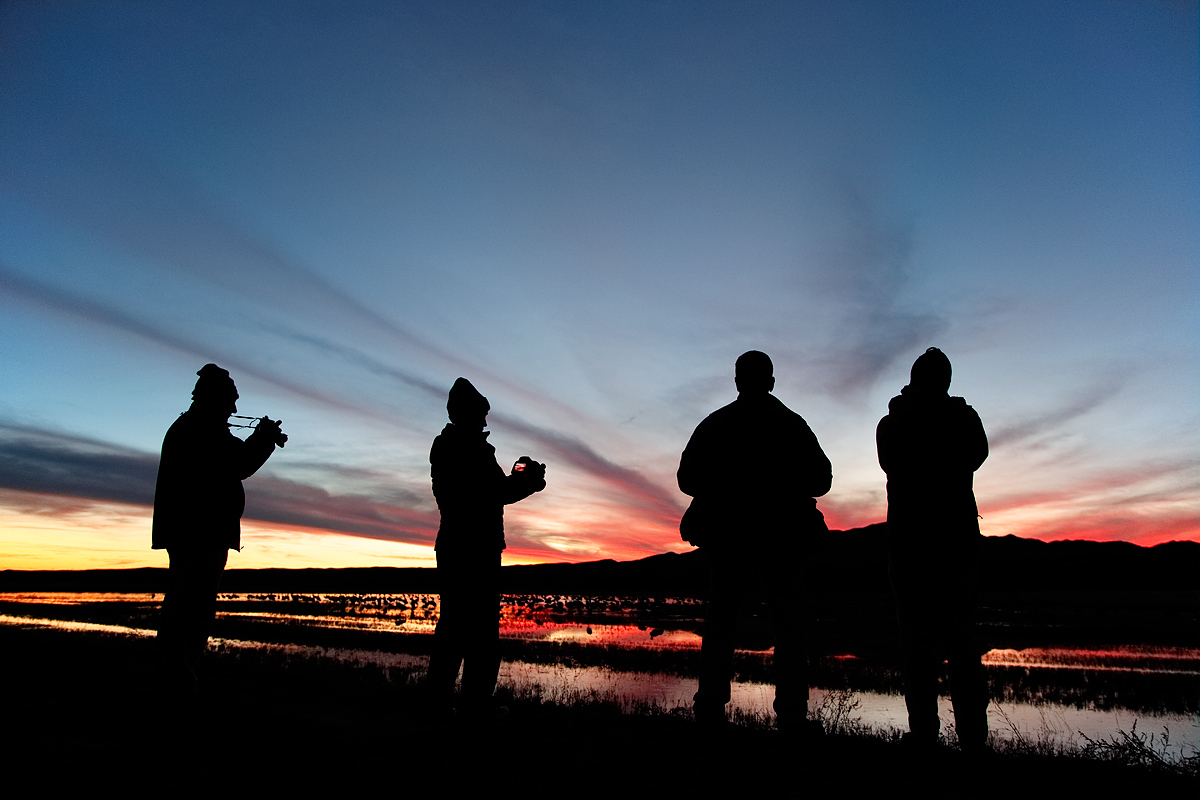|
This image was created yesterday evening at Bosque del Apache NWR in San Antonio, New Mexico with the hand held Canon EF 24-105mm f/4L IS USM lens (at 24mm) and the Canon EOS 5D Mark III Digital camera body ISO 640. Evaluative metering +1 stop as framed: 1/80 sec. at f/5.6 in Tv mode. Central sensor/AI Servo Rear Focus/Suround AF on the nearest crane and re-compose. Click here if you missed the latest version of the Rear Focus Tutorial. Be sure to click on the image to enjoy a larger version. |
A Fitting Ending
I saw it coming while we were still on the North Farm Loop Road, streaks of thin white clouds radiating in the western sky. “We might get some monster color about 20 minutes after sunset. We did. It was a fitting way to end two great weeks of photography at Bosque for Denise Ippolio and me. We thoroughly enjoyed ever moment that we spent with the two groups.
|
This image was also created yesterday evening at Bosque del Apache NWR in San Antonio, New Mexico with the hand held Canon EF 24-105mm f/4L IS USM lens (this time at 88mm) and the Canon EOS 5D Mark III Digital camera body ISO 1000. Evaluative metering at zero as framed: 1/60 sec. at f/6.3 in Tv mode. Central sensor/AI Servo Rear Focus/Suround AF on the nearest crane and re-compose. Click here if you missed the latest version of the Rear Focus Tutorial. Be sure to click on the image to enjoy a larger version. |
Short Zoom Lens Tips
The obvious focal length choice was 24mm to include the vast expanse of clouds and sky. After checking the exposure and creating several versions of the opening image here, I decided to zoom in and create an image that featured lots more color. In a variety of situations, we taught the groups to use Tv mode when appropriate. For the sunrise fly-ins and blast-offs it is much easier for most folks (including and especially me), to pick an appropriate shutter speed, dial in the correct EC (exposure compensation), and work in Auto ISO (or set ISO Safety Shift as I do) than it is to to work in Manual mode where you will often need to be change two or three of the exposure parameters every few minutes or so as the EV (light) levels increase.
I use this technique when I wish to ensure a minimum shutter speed for hand holding. Here, with the 24-105’s great IS system, I knew that creating sharp images hand held at 1/60 or 1/80 sec. would be child’s play. I could have gone a lot slower without a problem.
Learn more about using the 24-105mm and other short end zoom lenses in “Scenic, Wildlife, and B-Roll Versatility” here. If you plan on adding the 24-105 to your lens line-up, please use one of the B&H affiliate links here or start your B&H or Amazon searches using the generic link in the right hand column. Doing so would be greatly appreciated. As always, feel free to e-mail me with your gear questions.
Image Questions
After getting a perfect exposure for the opening image at +1 stop why did I use the metering exposure for the tighter image? Note: I added one full stop of light to the opening image but did not add any light to the second image. The question at hand is why not?
If you have no idea, you can learn the basics of exposure by studying the “Exposure Simplified” section in “The Art of Bird Photography II (ABP II: 916 pages 900+ images on CD only) and the chapter on Exposure in the original “The Art of Bird Photography” (soft cover). Best deal: order both when you buy the two book combo.
|
This image was created yesterday evening at Bosque del Apache NWR in San Antonio, New Mexico with the hand held Canon EF 24-105mm f/4L IS USM lens (at 28mm) and the Canon EOS 5D Mark III Digital camera body ISO 1600. Evaluative metering +1/3 stop as framed: 1/60 sec. at f/4.5 in Tv mode. Central sensor/AI Servo Rear Focus/Suround AF on the nearest crane and re-compose. Click here if you missed the latest version of the Rear Focus Tutorial. Be sure to click on the image to enjoy a larger version. |
Astounded
When we arrived at our chosen crane pool there was another workshop group at work. I was astounded when I saw that everyone was using telephoto lenses despite that fact that going wide was the obvious choice; light levels were much too low for folks to be using long glass. Not a single on of the participants was using a short lens. As soon as we had exited our vehicles, I had shouted to the group, “The shorter the better; 24-105, even 16-35. Deboarh, your 24-70 is fine. The 70-200 is too long.” Everyone listened and we all made many great images.
Above you see part of the group at work. Denise Ippolito is checking the composition on the rear LCD screen of her 5D Mark III. Again, it was a fitting way to end a great two weeks.
Your Favorite?
Which of the three images above do you like best? Please let us know why you made your choice.
Last Year’s Grand Prize winning image by Lou Coetzer

|
BIRDS AS ART 2nd International Bird Photography Competition
The December 21, 2013 closing deadline is fast approaching.
Learn more and enter the BIRDS AS ART 2nd International Bird Photography Competition here. Twenty-five great prizes including the $1000 Grand Prize and intense competition. Bring your best.
Support the BAA Blog. Support the BAA Bulletins: Shop B&H here!
We want and need to keep providing you with the latest free information, photography and Photoshop lessons, and all manner of related information. Show your appreciation by making your purchases immediately after clicking on any of our B&H or Amazon Affiliate links in this blog post. Remember, B&H ain’t just photography!




Amazon
Everyone buys something from Amazon, be it a big lens or deodorant. Support the blog by starting your search by clicking on the logo-link below. No purchase is too small to be appreciated; they all add up. Why make it a habit? Because I make it a habit of bringing you new images and information on an almost daily basis.
Typos
In all blog posts and Bulletins feel free to e-mail or leave a comment regarding any typos, wrong words, misspellings, omissions, or grammatical errors. Just be right. 🙂
IPT Info
Many of our great trips are filling up. You will learn more about how to make great images on a BAA IPT than anywhere else on the planet. Click here for the schedule and additional info.

















Hi Artie,
You did not add any light to the second shot because the silhouetted birds and distant hill were taking up a larger portion of the frame. As such, the sensor evaluated (averaged) the light levels to be less.
And that tighter shot is my favourite. I didn’t even notice the birds from the get-go in the first post.
You are correct Rasta Man! The meter sees all the dark and lets in more light. Way to go. artie
😀 I’m learning from the best!!
There is less light hitting the sensor than in the first wide shot. If the exposure remained at +1 then the mountains and birds would not have been the desired black silouettes.
Artie both great images . I like the second one the best the birds fill the frame better with the larger silhouettes. You backed off the one stop of exposure because of the higher ISO. Also the mountain background is better highlighted . Both great images great colors just different perspective.
Thanks for the kind words but nope on the exposure answer….
You added +1 correction to the first image, but not to the second one, because the sun had gone down in the interval, making the scene overall darker.
Nope…
I like the first image best because there is sufficient color in the sky to use all that you did.
Seeing the LCD on Denise’s camera adds a nice touch to the group shot.
Hi guys,
I really like the first wide angle shot the best because the sky is amazing. For me when a sky looks like this you want to get the whole expansive feeling of the wide open sky. The colors are leading you to the horizon enhancing the wide angle of the lens. Excellent shot. Happy travels.